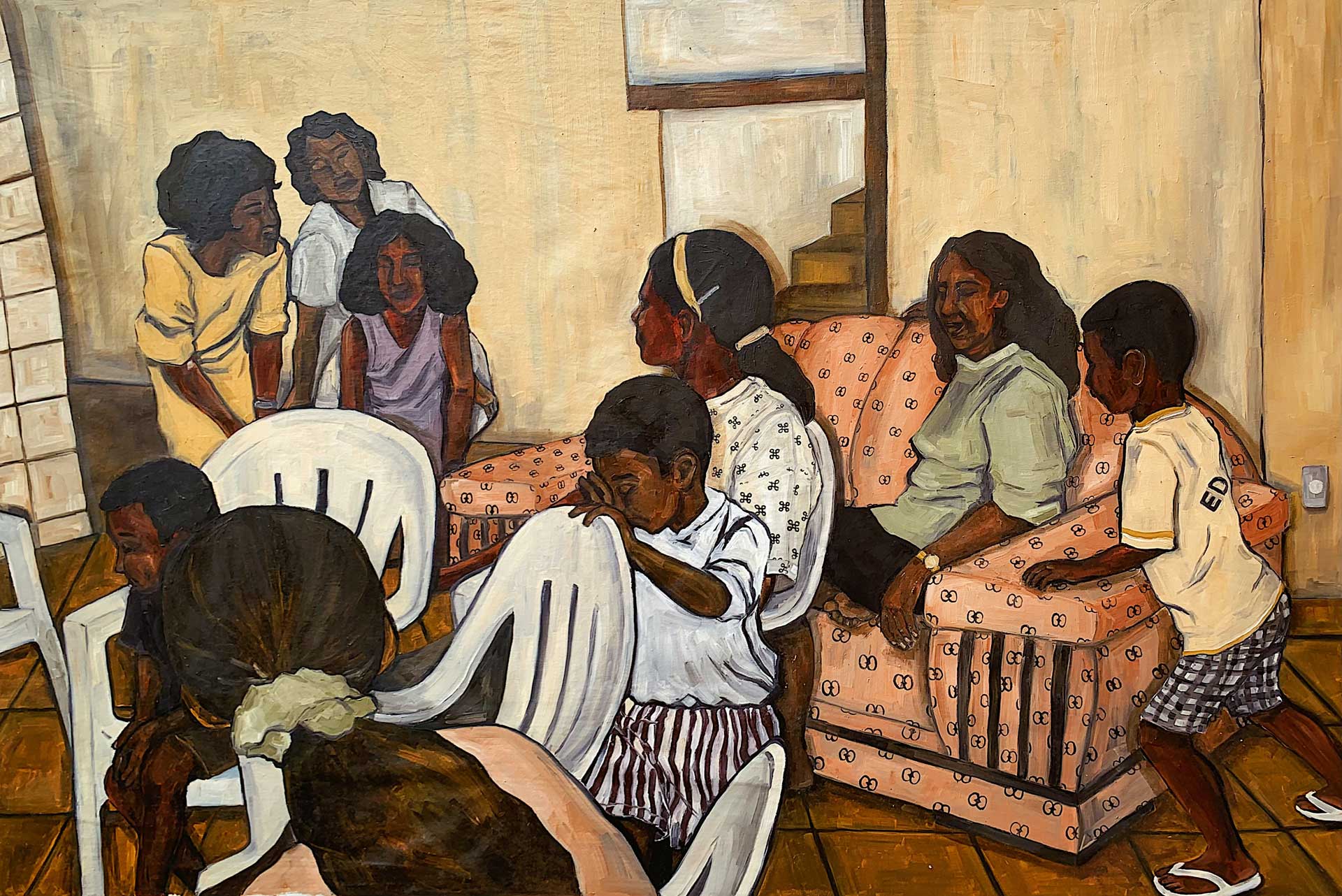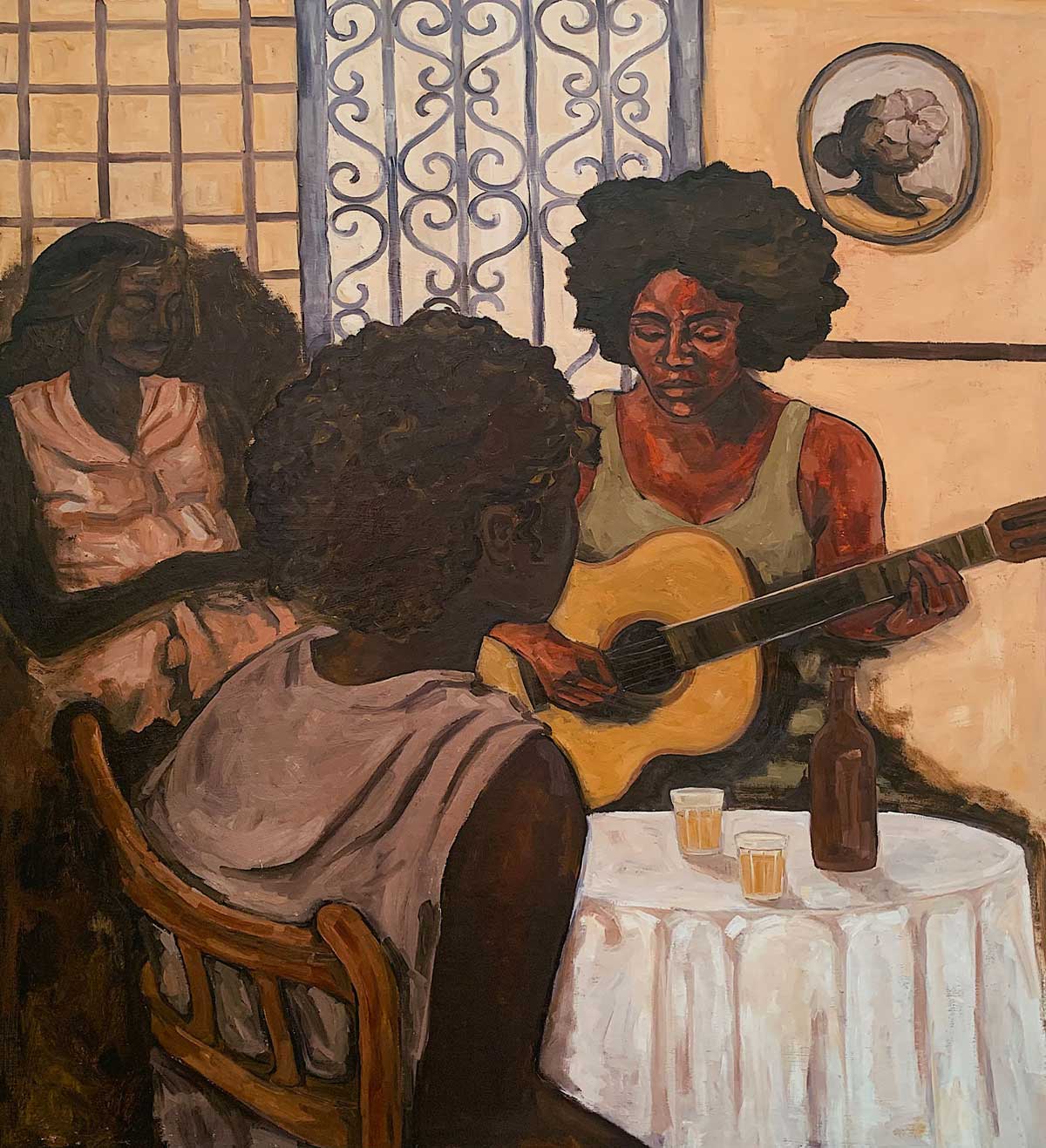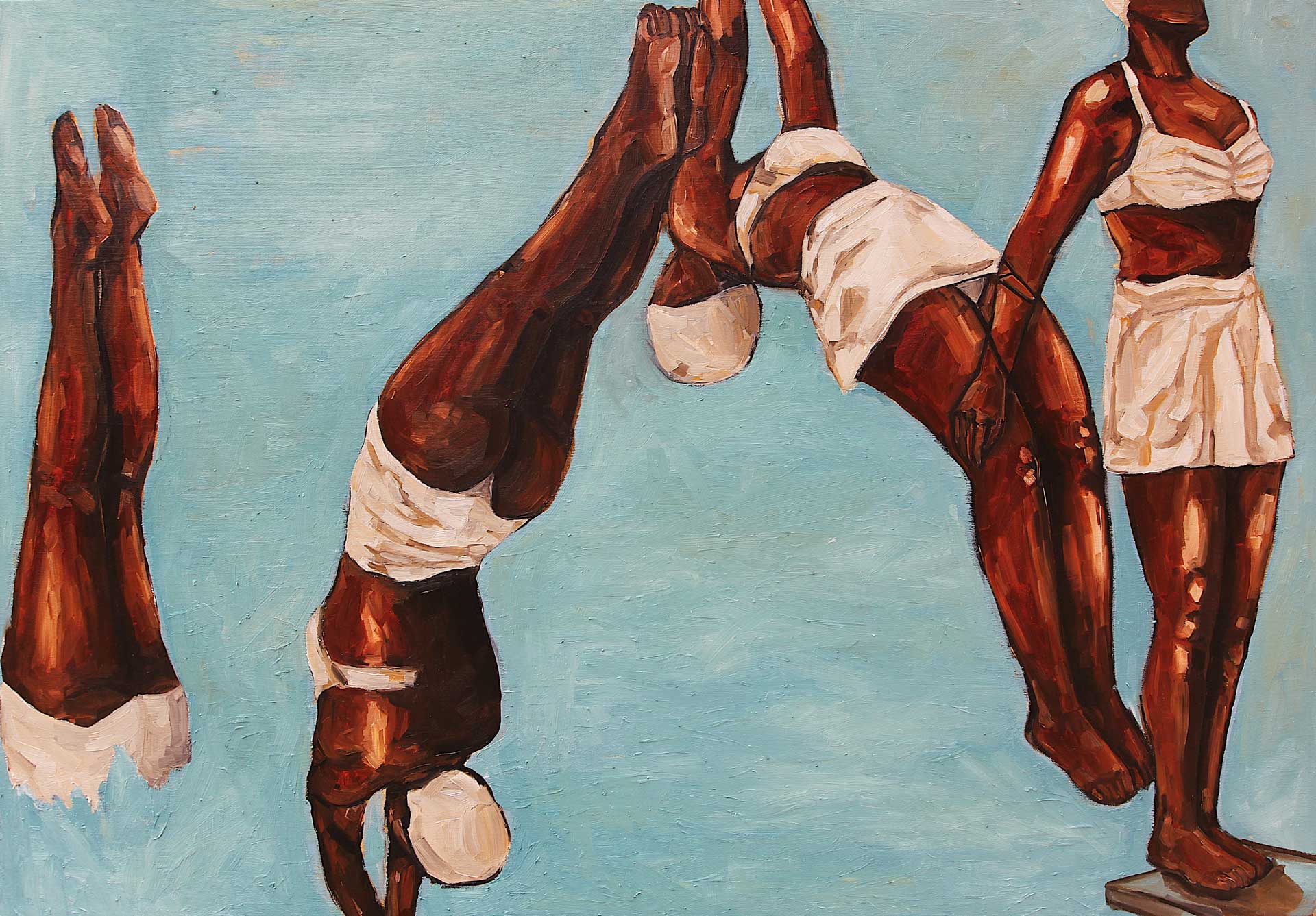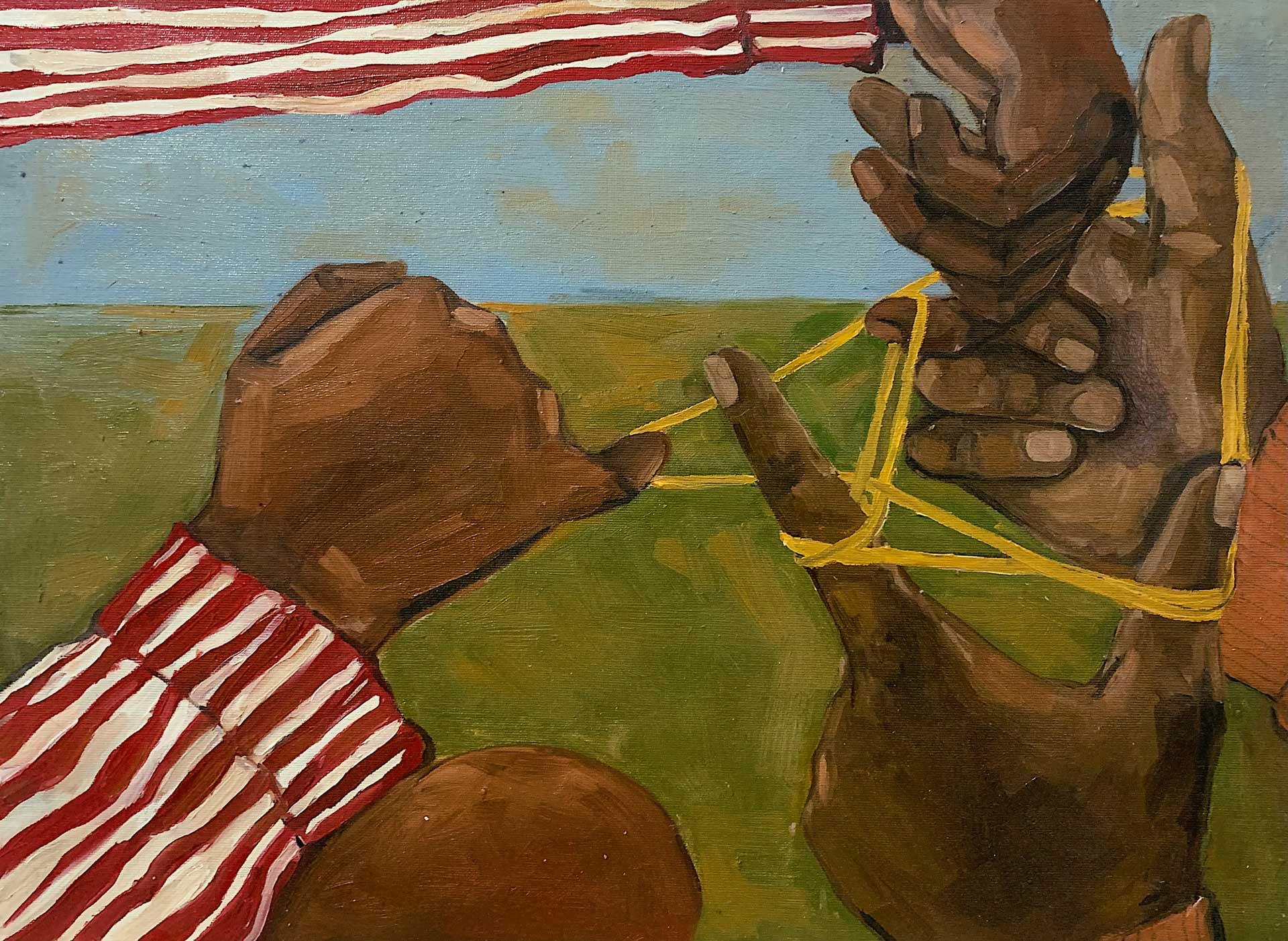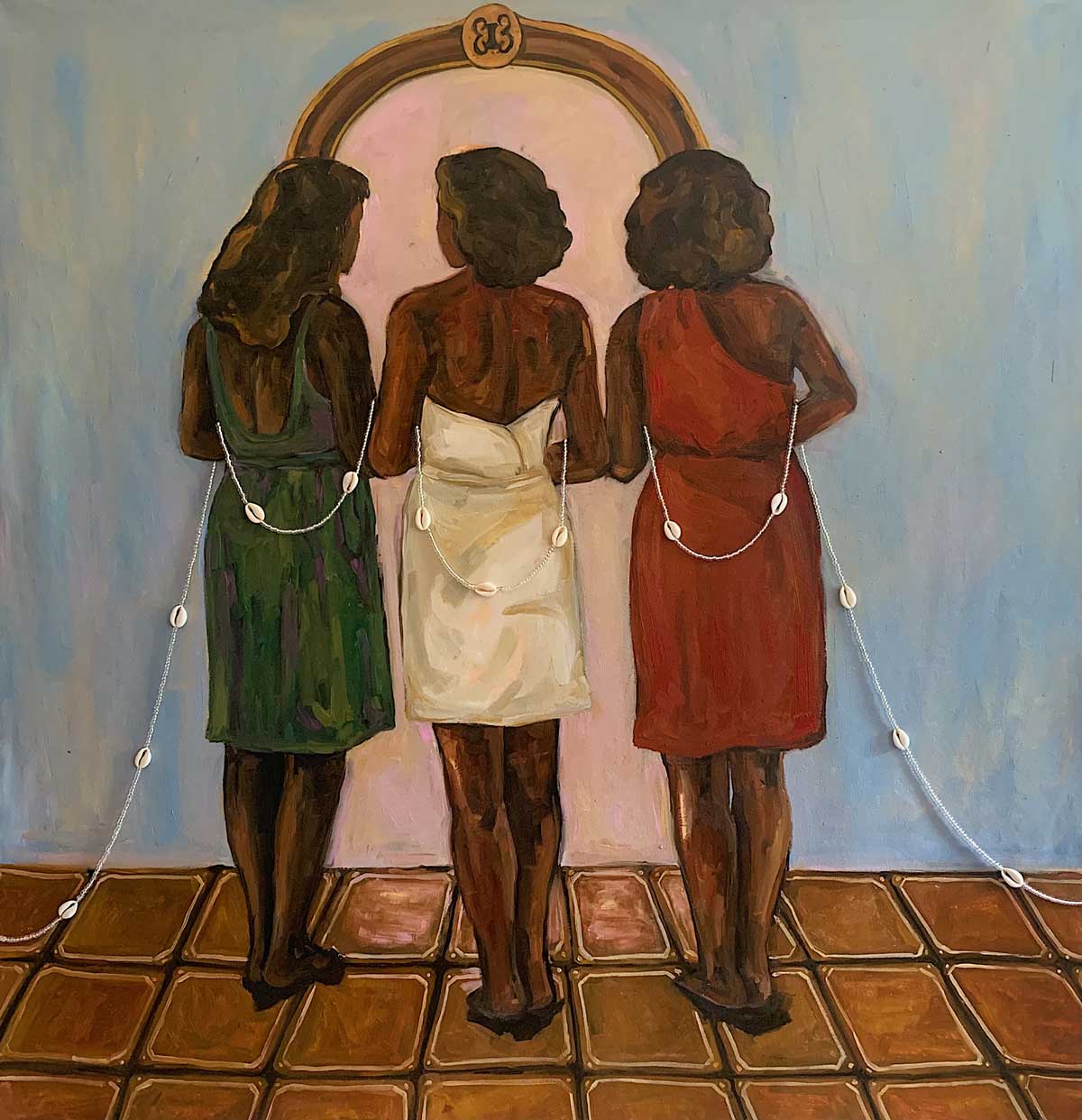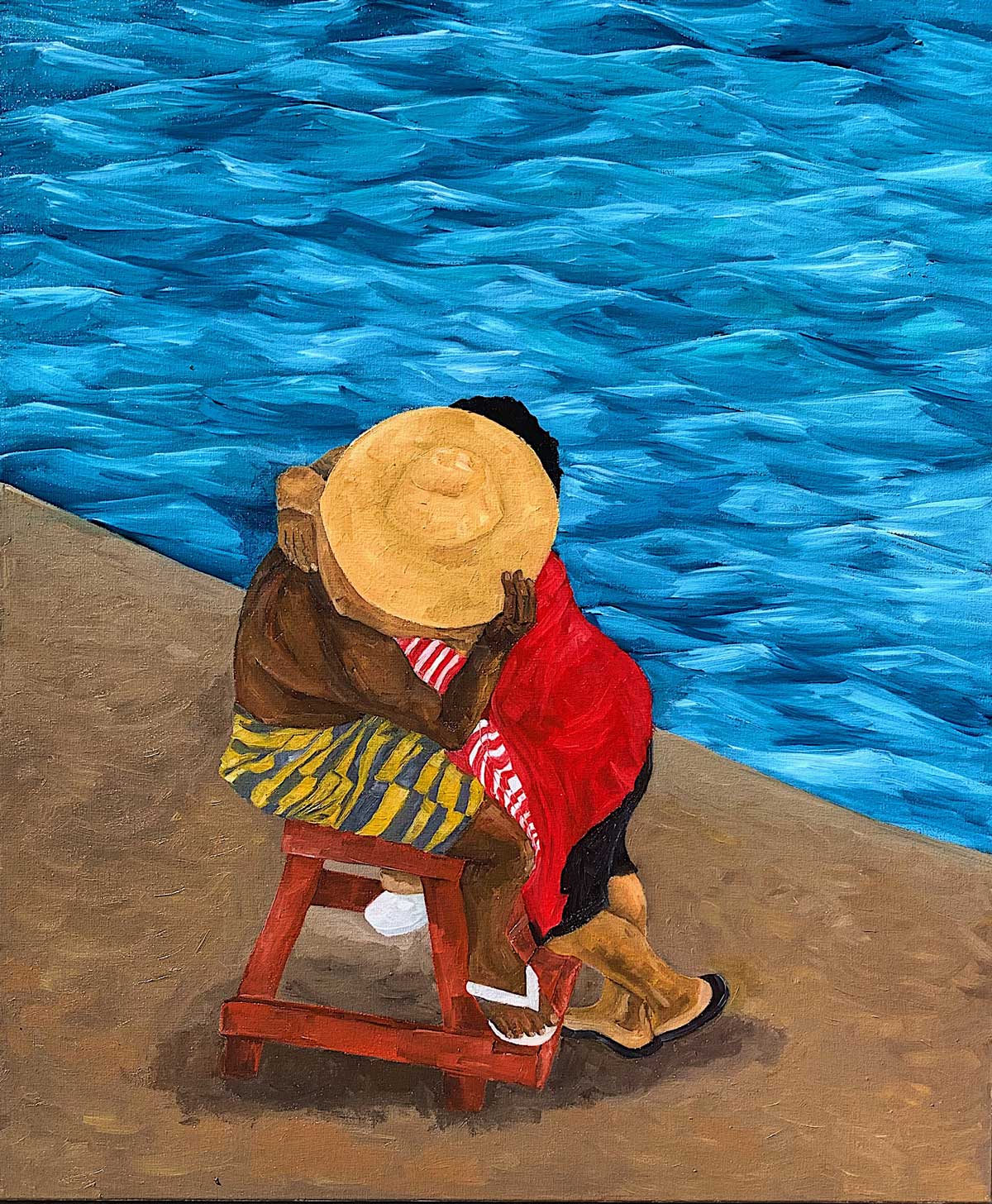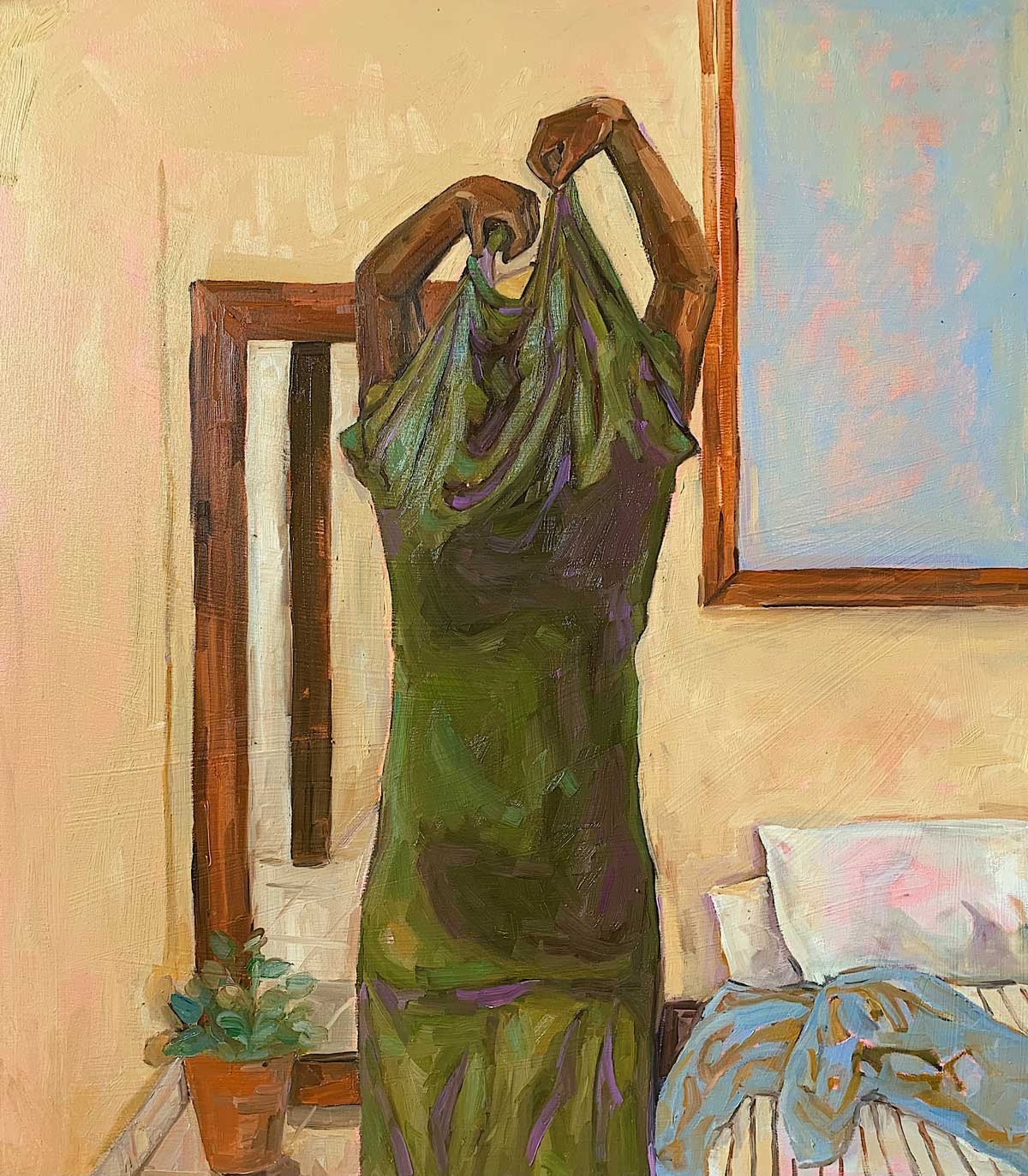I met Manu in 2021, when we were both just beginning our artistic journeys—she in Caraguatatuba, on the coast of São Paulo, and I in the Greater São Paulo area. It was during the pandemic, a time marked by isolation and virtual connections, that our paths first crossed. What started as casual questions about the art market exchanged through social media quickly blossomed into a deep friendship—nurtured by daily conversations, video calls where we shared our painting processes, long voice notes, and reflections on life and creation.
Even from afar, we created a space of listening and exchange that stayed with us until the day we finally met in person—and saw each other’s work up close, side by side, in group exhibitions I still hold dear. Encountering Navas’ paintings in person felt like hearing a song I somehow already knew. There’s something in her work that goes beyond the visual. Her quiet, intimate depictions of everyday life evoke not only memories, but also physical sensations, as if each painting carries a song within it—unheard but deeply felt.
Talita Zaragoza, Untitled Memory I, 2023. Acrylic, colored crayon, pencil, and graphite on linen, 39.5 x 35.5 inches. Courtesy of the artist.
Navas primarily works with oil on canvas, exploring the materiality of her medium with remarkable sensitivity. Like me, she is a self-taught artist—and it’s evident how much dedication and study underpin each of her works. Her technical command allows for a delicate construction of light, shadow, and movement, layered in a way that maintains the softness of the image without sacrificing depth. Her use of limited palettes and gentle tones reinforces the contemplative nature of her practice. In many of her paintings, I see domestic interiors transformed into spaces of pause and silence. In others, moments of celebration emerge—parties and gatherings that, through her lens, take on new meaning as acts of resistance against the hardships woven into Black lives.
Talita Zaragoza, Untitled Memory I, 2023. Acrylic, colored crayon, pencil, and graphite on linen, 39.5 x 35.5 inches. Courtesy of the artist.
Talita Zaragoza, Untitled Memory I, 2023. Acrylic, colored crayon, pencil, and graphite on linen, 39.5 x 35.5 inches. Courtesy of the artist.
There is also a striking intentionality to her visual language. Manuela’s gaze is deeply shaped by photography and cinema, visible in the way she composes angles, frames, and cuts each scene. Often, the perspective is subtly off-center—capturing what feels like the pause in a gesture, a suspended movement. These framings evoke feelings that reach beyond the image itself. There’s something of a still frame in her paintings—a suggestion of continuity beyond the edges, as if each scene belonged to a larger, quiet, and profound narrative.
This cinematic sensibility speaks not only to her formal choices, but to her poetic attention to everyday life—a gaze tuned to the fleeting details that so often go unnoticed.
Talita Zaragoza, Fish Factory Residency, September 2019, Iceland. Photo: Leandro Viana. Courtesy of the artist.
Talita Zaragoza, Untitled Memory IV, 2024. Acrylic and colored crayon on linen, 36 x 55 inches. Courtesy of the artist.
To speak about her work, for me, is also to speak about the power of encounters—of how art can become a bridge, a refuge, and a language. Manuela’s painting moves me because it carries what I understand as essential: collectivity, affection, time, silence, and resistance.
Talita Zaragoza, Fragment XIV, 2020. Acrylic on linen, 27 x 19 inches. Courtesy of the artist.
Larissa de Souza (São Paulo – 1995), a self-taught artist, focuses her predominantly figurative painting on the image of the Afro-diasporic woman in her particular and collective universe. Her painting carries the history of the women in her lineage and the strength of many others. In 2016, she started working at an art supply store, where she learned in-depth about the specific aspects of various materials and techniques. Soon after, she began working as an assistant in the studio of the same store. Since childhood, she has been interested in drawing and fascinated by the graffiti in the city of São Paulo. It was during the 2020 pandemic that she had the opportunity to dedicate herself to producing her own works.
To know more about Larissa de Souza: @azuoslarissa
Left: Talita Zaragoza, Untitled Memory III, 2024. Acrylic, colored crayon, and graphite on linen, 38 x 31 inches.
Right: Talita Zaragoza in her grandfather’s studio, São Paulo, 2021. Courtesy of the artist.
Self-taught, Manuela Navas [1996, Jundiaí, São Paulo] builds her artistic practice across painting, photography, and woodcut printmaking. Her work centers on Black bodies, femininity, and motherhood—whether through portraits or everyday scenes—focusing on Afro-diasporic individuals, the experience of being a woman, and the complexities of motherhood. These themes form the foundation of her work, approached through a decolonial and affective lens.
Her art reflects on the lived realities of the Brazilian people, of which she is a part, as an exercise in contemplating her own existence—from the material to the metaphysical—exploring the nuances of collective life as a Black mother.
Manuela’s work is held in major collections and has been featured in exhibitions both in Brazil and internationally. Notable solo exhibitions include O concreto que evapora (Bacorejo, Rio de Janeiro, 2022) and Lembranças Inventadas (Monti8, Italy, 2022). Her group shows include Alguma versão do que aconteceu (Casa Bicho, RJ, 2022), Dos Brasis – Arte e pensamento negro (Sesc Belenzinho, 2023), Funk: Um grito de ousadia e liberdade (Museu de Arte do Rio, 2023), ELEMENTS (UUU Art Collective, New York, 2022), and Ah, eu amo as mulheres brasileiras (Centro Cultural de São Paulo, 2023), among many others, including art fairs.
In 2022, she participated in the urban art festival NaLata, painting a large-scale mural in São Paulo’s Pinheiros neighborhood. More recently, she took part in IBORU, a cultural occupation led by Marcelo D2 in Rio de Janeiro, São Paulo, and Salvador. Her works are also featured in the scenography of Zeca Pagodinho – 40 Anos, the celebrated tour by the legendary Brazilian musician.
Manuela Navas lives and works in Rio de Janeiro.
Learn about Manu Navas @navas_manuela
Talita Zaragoza,Silhouette 2, 2002. Acrylic, colored crayon, colored pencil, and graphite on linen, 30 x 48 inches. Courtesy of the artist.


